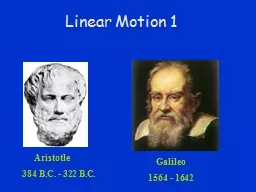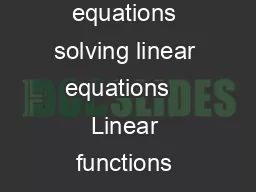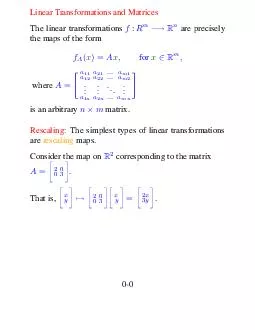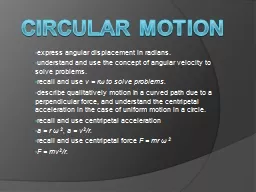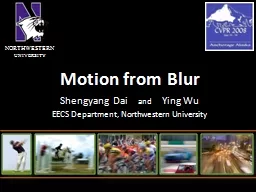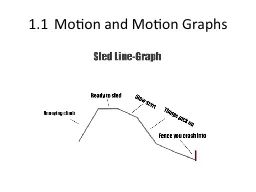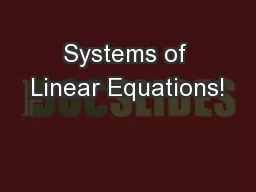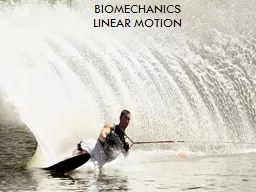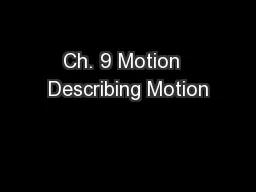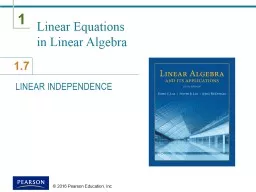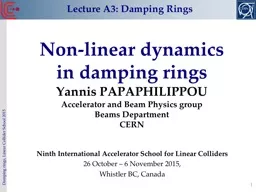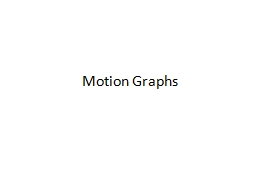PPT-Linear Motion 1
Author : cheryl-pisano | Published Date : 2016-07-21
Aristotle 384 BC 322 BC Galileo 1564 1642 Scalars and Vectors The motion of objects can be described by words such as distance displacement speed velocity
Presentation Embed Code
Download Presentation
Download Presentation The PPT/PDF document "Linear Motion 1" is the property of its rightful owner. Permission is granted to download and print the materials on this website for personal, non-commercial use only, and to display it on your personal computer provided you do not modify the materials and that you retain all copyright notices contained in the materials. By downloading content from our website, you accept the terms of this agreement.
Linear Motion 1: Transcript
Download Rules Of Document
"Linear Motion 1"The content belongs to its owner. You may download and print it for personal use, without modification, and keep all copyright notices. By downloading, you agree to these terms.
Related Documents

